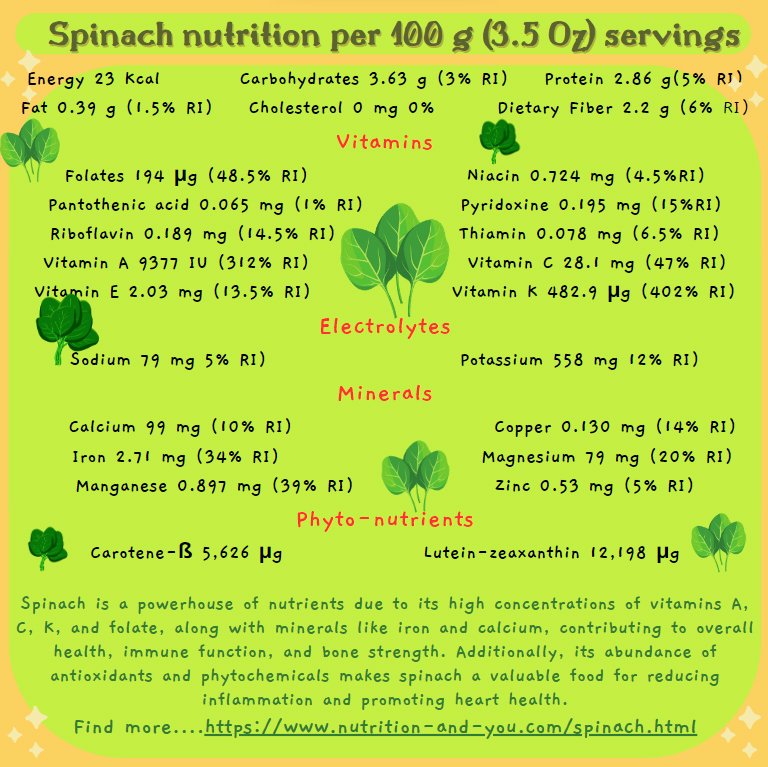Spinach nutrition (Spinacia oleracea), raw, values per 100g of servings.
 |
≺≺ Back to Spinach main page....
Further reading (Links opens in new window):
USDA National Nutrient Database.(Link opens new window)
 |
≺≺ Back to Spinach main page....
Further reading (Links opens in new window):
USDA National Nutrient Database.(Link opens new window)